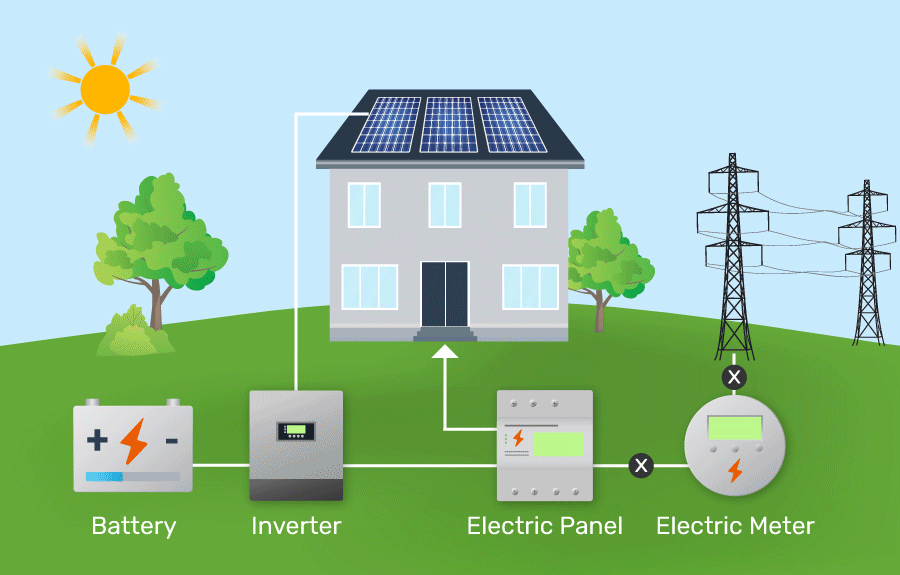Solar PV

Solar PV
Solar Cell or Photovoltaic (PV) cell is a device that is made up of semiconductor materials such as silicon, gallium arsenide and cadmium telluride, etc. that converts sunlight directly into electricity. When solar cells absorb sunlight, free electrons and holes are created at positive/negative junctions. If the positive and negative junctions of solar cell are connected to DC electrical equipment, current is delivered to operate the electrical equipment.
Single Crystalline Silicon Polycrystalline Silicon Amorphous Silicon
- Crystalline Silicon PV Module: Two types of crystalline silicon (c-Si) are used to produce PV module; single crystalline silicon or known as monocrystalline silicon and multi-crystalline silicon, also called polycrystalline silicon. The polycrystalline silicon PV module has lower conversion efficiency than single crystalline silicon PV module but both of them have high conversion efficiencies that average about 10-12%.
- Amorphous Silicon PV Module: Amorphous silicon (a-Si) PV module or thin-film silicon PV module absorbs light more effectively than crystalline silicon PV module, so it can be made thinner. It suits for any applications that high efficiency is not required and low cost is important. The typical efficiency of amorphous silicon PV module is around 6%.
- Hybrid Silicon PV Module: A combination of single crystalline silicon surrounded by thin layers of amorphous silicon provides excellent sensitivity to lower light levels or indirect light. The Hybrid silicon PV module has highest level of conversion efficiency about 17%.
Solar PV system
Solar cells produce direct current (DC), therefore they are only used for DC equipments. If alternating current (AC) is needed for AC equipments or backup energy is needed, solar photovoltaic systems require other components in addition to solar modules. These components are specially designed to integrate into solar PV system, that is to say they are renewable energy products or energy conservation products and one or more of components may be included depending on type of application. The components of solar photovoltaic system are

- Solar Module is the essential component of any solar PV system that converts sunlight directly into DC electricity.
- Solar Charge Controller regulates voltage and current from solar arrays, charges the battery, prevents battery from overcharging and also performs controlled over discharges.
- Battery stores current electricity that produces from solar arrays for using when sunlight is not visible, nighttime or other purposes.
- Inverter is a critical component of any solar PV system that converts DC power output of solar arrays into AC for AC appliances.
- Lightning protection prevents electrical equipments from damages caused by lightning or induction of high voltage surge. It is required for the large size and critical solar PV systems, which include the efficient grounding.
Solar energy is the ultimate source of energy, which is naturally replenished in a short period of time, for this reason it is called "renewable energy" or "sustainable energy" source. To take advantages of solar energy, the variety of technologies is used to covert solar energy to heat and electricity. The use of solar energy involves 'energy conservation' because it is the way to use energy source that comes from the nature and uses it more wisely and efficiently.

